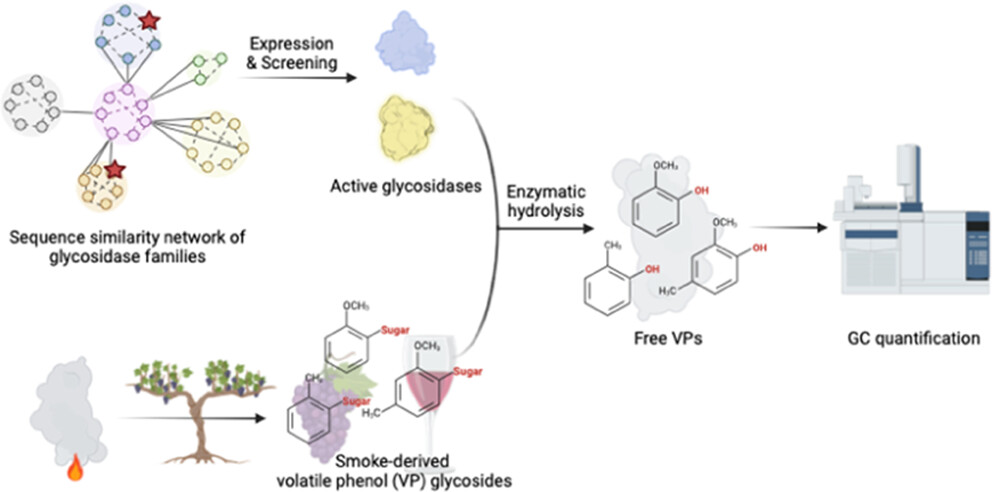New article in Journal of Agricultural and Food Chemistry
A new publication from Prof. Ilias Tagkopoulos and collaborators about Discovery of potent glycosidases enables quantification of smoke-derived phenolic glycosides through enzymatic hydrolysis.

Abstract: When grapes are exposed to wildfire smoke, certain smoke-related volatile phenols (VPs) can be absorbed into the fruit, where they can be then converted into volatile-phenol (VP) glycosides through glycosylation. These volatile-phenol glycosides can be particularly problematic from a winemaking standpoint as they can be hydrolyzed, releasing volatile phenols, which can contribute to smoke-related off-flavors. Current methods for quantitating these volatile-phenol glycosides present several challenges, including the requirement of expensive capital equipment, limited accuracy due to the molecular complexity of the glycosides, and the utilization of harsh reagents. To address these challenges, we proposed an enzymatic hydrolysis method enabled by a tailored enzyme cocktail of novel glycosidases discovered through genome mining, and the generated VPs from VP glycosides can be quantitated by gas chromatography–mass spectrometry (GC–MS). The enzyme cocktails displayed high activities and a broad substrate scope when using commercially available VP glycosides as the substrates for testing. When evaluated in an industrially relevant matrix of Cabernet Sauvignon wine and grapes, this enzymatic cocktail consistently achieved a comparable efficacy of acid hydrolysis. The proposed method offers a simple, safe, and affordable option for smoke taint analysis.
Reference: Cui, Youtian, Mary Riley, Marcus V. Moreno, Mateo M. Cepeda, Ignacio Arias Perez, Yan Wen, Lik Xian Lim, Eric Andre, An Nguyen, Cody Liu, Larry Lerno, Patrick K. Nichols, Harold Schmitz, Ilias Tagkopoulos, James A. Kennedy, Anita Oberholster, and Justin B. Siegel. “Discovery of Potent Glycosidases Enables Quantification of Smoke-Derived Phenolic Glycosides through Enzymatic Hydrolysis.” Journal of Agricultural and Food Chemistry (2024). doi: 10.1021/acs.jafc.4c01247 (link)